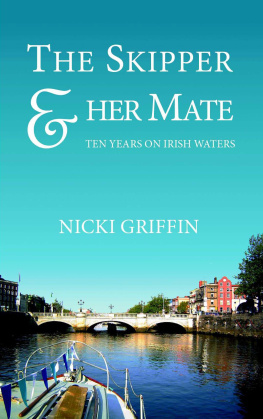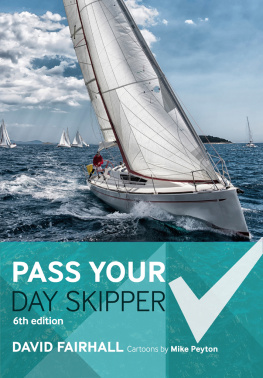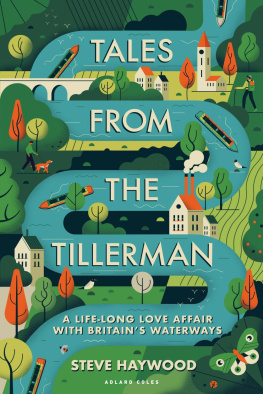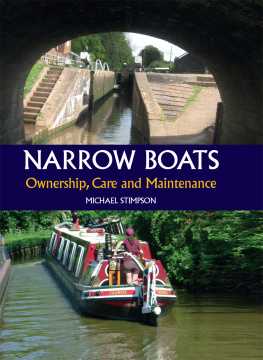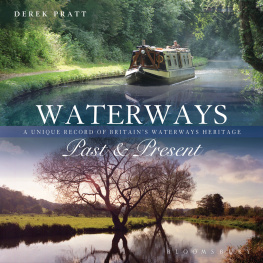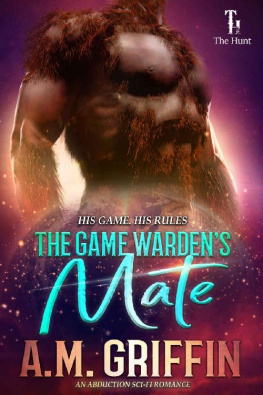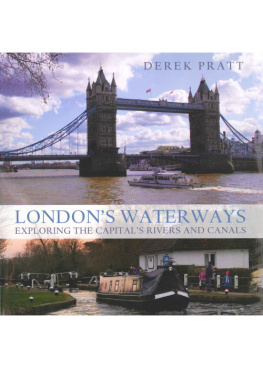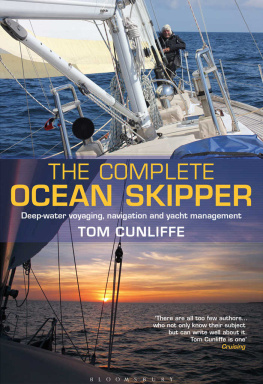
T HE S KIPPER
&
H ER M ATE
THE SKIPPER
&
HER MATE
Ten Years on Irish Waters
NICKI GRIFFIN
The Skipper & Her Mate
First published 2013
by New Island
2 Brookside
Dundrum Road
Dublin 14
www.newisland.ie
Copyright Nicki Griffin, 2013
The author has asserted her moral rights.
PRINT ISBN: 978-1-84840-244-7
EPUB ISBN: 978-1-84840-245-4
MOBI ISBN: 978-1-84840-246-1
All rights reserved. The material in this publication is protected by copyright law. Except as may be permitted by law, no part of the material may be reproduced (including by storage in a retrieval system) or transmitted in any form or by any means; adapted; rented or lent without the written permission of the copyright owner.
British Library Cataloguing Data. A CIP catalogue record for this book is available from the British Library.
10 9 8 7 6 5 4 3 2 1
Acknowledgments
T hank you to fellow boaters Brian Goggin and Tom Bailey for various nuggets of information, and to the many members of the IWAI who have given their help and advice along the way.
Thanks also to Adrian Frazier, for title suggestions and setting this book in motion, and to editor Eoin Purcell for taking it the rest of the way.
Finally, thanks to the mate of this story, my husband Joe, for his companionship, support and encouragement.
Contents
Chapter One
S hadows were sliding across the water as the lock gates opened and I started the boat engine. I was exhausted. We had left Portumna two hours before, travelling upstream in our hire boat towards Meelick, and now it was time to park. I had read about how to do this in the Captains Handbook sent out to us weeks before. No doubt it was also part of the video presentation we had all been too nervous and excited to take in, but the ten minutes out-on-the-boat training had covered only reversing into a parking space. I had failed at that, and now feared doing the same with this sideways-on mooring.
The jetty was long and empty but for one boat. There was no current to worry about as we were on a stretch of canal, but I had no idea of how to proceed. The boat was pointed in the right direction, Joe beside me giving advice. Much too late we realised he ought to be outside, ready to do something useful with ropes.
A man appeared from the boat at the jetty giving an encouraging smile. By this stage Joe was on the patio at the back sorting out the tangle of line and panicking. I was wildly putting the boat into reverse then forward, reverse then forward. Boats dont have brakes, at least not in the conventional sense. Reverse is the way you slow down or stop, and it takes some getting used to. Boats also move differently to road vehicles. If you turn a boat to the right, for example, the front goes right and the back goes left, which means you have to be aware of your rear end as well as your fore.
Throw me the bow rope, said the man on the jetty, then added helpfully, the one at the front. The boat cracked off timber and Joe paused to glare at me as he made cautious progress up the side deck. He flung the rope at our adviser, who caught it deftly in one hand and tied it to a metal ring.
Now I need the stern line. The man gestured at me, and I gathered I was supposed to provide it. That sounded a better idea than trying to do anything more with the engine, so I scrambled outside and threw it.
Finally we were safely tied up with only one witness to our incompetence. I was shaking with anxiety and relief, but wed had our first glimpse into a parallel river world quite different from anything experienced before. In Ireland wed seen boats passing by when driving alongside Lough Derg, and in England Id grown up next to a canal. My secondary school in Nantwich, a market town in South Cheshire, sat beside the Shropshire Union, where narrowboats were a part of everyday life. As with anything too familiar, though, Id ignored them. I was beginning to see what Id missed.
The Captains Handbook showed Meelick to be a tiny place. Our mooring was not beside the village itself but at Victoria Lock, completed in 1844 and named after the then Queen of England (there is an Albert Lock further up the Navigation). The canal wed entered via the lock was built to bypass the Keelogue Rapids most of the Shannon rushes through the broad weir north of the lock. Above the weir a quay wall gives access to the village. Approaching the lock from the south you see a solid-looking stone building on a rise a little to the west. This is Meelick Church, founded as a Franciscan friary and in use since 1414 a record among Catholic churches. Its the sweetest little church Ive ever been inside, but is tricky to find if you approach by road: I played flute there for a colleagues wedding and half the party got lost on the way.
Before dinner we went for a stroll, and realised we were on an island between the canal and another bit of the Shannon. Its a confusing part of the river, splitting into many channels to form islands both north and south of the village. We walked across a wide timber bridge with dark, deep water beneath. This stretch of the Shannon, I discovered, had been widened in an attempt to alleviate flooding, for this is a very floody part of the country. In winter the fields are indistinguishable from the river Meelick is in the Callows, the flood plain of the River Shannon. The Callows (from the Irish caladh, meaning river meadow) stretch for 50 km between Portumna and Athlone. Water meadows like this were commonplace in Europe before extensive drainage, canal building and various hydroelectric schemes changed them from wildlife haven to year-round grazing land or riverside properties.
On the other side of the bridge we followed a track across a boggy field and found another, smaller stretch of water with an old, disused lock and lock house (still lived in by the Victoria Lock-keeper). This was the Cloonaheenogue Canal, the original Shannon Navigation built in 1755 by Thomas Omer to avoid the rapids at Meelick. There is still water below the lock, but above it the channel has only a trickle and looks like an oversized drain. Legs stretched, we went back to the boat to try out the cooking facilities.
At quarter to nine the following morning boats began to pile up on our jetty, waiting for the first lock. We felt put out at the intrusion. The first lot went through at nine, while we watched from the deck with a cup of tea. We were excited (and edgy) about heading off into unknown upstream waters. I studied the Captains Guide obsessively, hoping its information would painlessly install itself.
Breakfast over, we stood on the jetty considering how to get the boat off it, when a big cruiser pulled in behind from the same Emerald Star fleet as ourselves. We hovered uncertainly, ready to catch the ropes river camaraderie had already taken hold and were impressed with the skills of the man high up on the fly bridge.
How long have you been away? I asked as, once secured, he hopped onto the jetty with his wife and two children.
Since Thursday.
But youve been on a boat before?
He laughed and shook his head. I must have looked incredulous.
Are you only just out? he asked. We nodded. I felt miserable, sure there was no way Id ever be as confident as he was.
Youll soon get the hang of it, he said. I hadnt a clue when we took the boat. The main thing to remember is you dont have to reverse into a parking spot. Everyone goes in front first.
Next page
